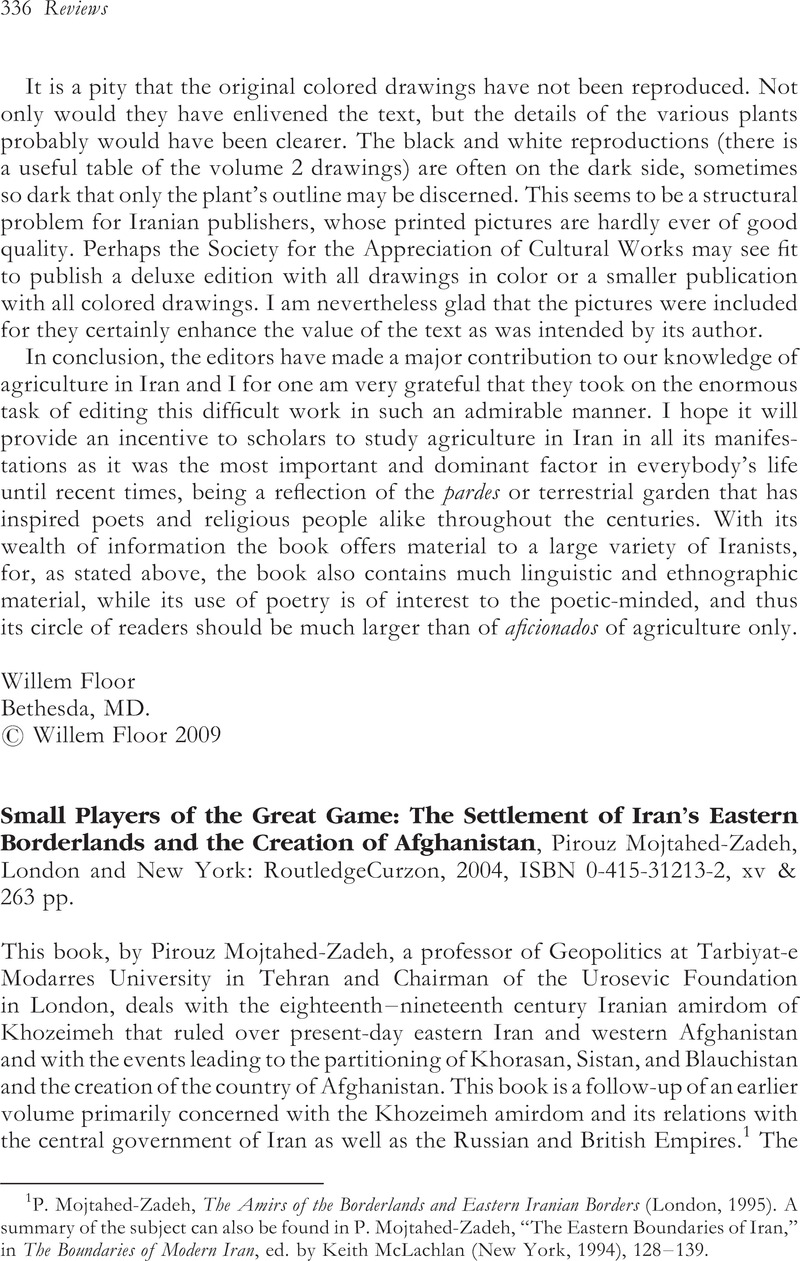No CrossRef data available.
Published online by Cambridge University Press: 01 January 2022

1 Mojtahed-Zadeh, P., The Amirs of the Borderlands and Eastern Iranian Borders (London, 1995)Google Scholar. A summary of the subject can also be found in Mojtahed-Zadeh, P., “The Eastern Boundaries of Iran,” in The Boundaries of Modern Iran, ed. by Keith, McLachlan (New York, 1994), 128–139Google Scholar.
2 Mohammad-Ali, Bahmani Qajar, Irân va Afghânestân: Az Yegânegi tâ Ta'yin-e Marz-hâye Siyâsi [Iran and Afghanistan: From Unity to Demarcation of Political Boundaries] (Tehran, 2004)Google Scholar.
3 For Elamite confederacy see Potts, D. T., The Archaeology of Elam: Formation and Transformation of an Ancient Iranian State (Cambridge, 1999CrossRefGoogle Scholar); for Median Empire see, most recently, Christopher, Tuplin, “Medes in Media, Mesopotamia, and Anatolia: Empire, Hegemony, Domination or Illusion?” Ancient West and East, 3, no. 2 (2004): 223–251Google Scholar; for the Achaemenid Empire see Christopher, Tuplin, “The Administration of the Achaemenid Empire,” in Coinage and Administration in the Athenian and Persian Empires, ed. by Carradice, I., BAR International Series 34 (Oxford, 1987), 109–166Google Scholar; for the Seleucid Empire see Susan, M. Sherwin-White and Kuhrt, A., From Samarkhand to Sardis: A New Approach to the Seleucid Empire (London, 1993)Google Scholar; for the Arsacid Empire see Jóseph, Wolski., L'empire des Arsacids (Leuven, 1993Google Scholar); for the Sasanid Empire see Rika, Gyselen, Contributions á l'histoire et la géographie historique de l'empire sassanide (Bures-sur-Yvette, 2004)Google Scholar.
4 This pattern seems to demonstrate some similarities with Michael Mann's model for “ideological” vs. “economic” powerbase; see The Sources of Social Power, 2 vols. (Cambridge, 1986–93)Google Scholar.
5 On the significance of external and internal specialization of the political system and its role in distinguishing a chiefdom from a state see Henry T., Wright, “Recent Research on the Origin of the State,” Annual Review of Anthropology, 6 (1977): 379–397Google Scholar.
6 Cf. “IRAN: Special Report on the Hamun Lake Crisis,” http://www.irinnews.org/report.asp?ReportID= 30081&SelectRegion=Central_Asia&SelectCountry=Iran (accessed 17 March 2004).
7 Peter, Sluglett, Britain in Iran: Contriving King and Country, 1914–1932, 2nd edition (London, 2007Google Scholar).